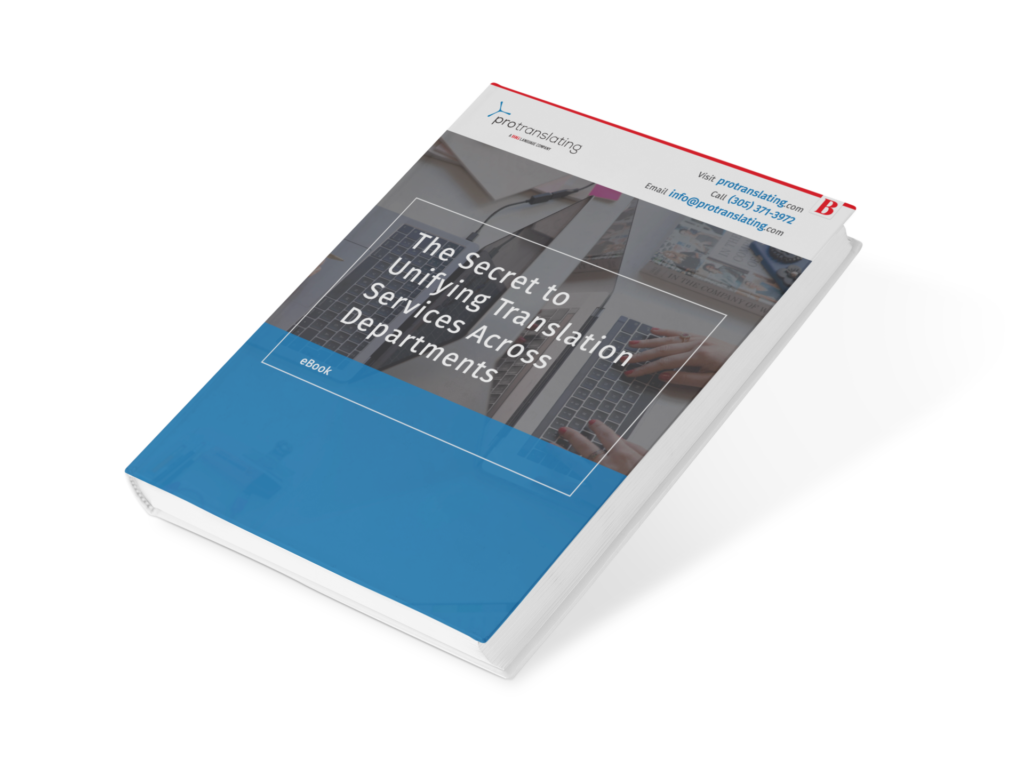If you want your business to expand globally ‘translation’ and ‘localization’ are terms you will become very familiar with. Whether you’re a software development company, manufacturing company, or service provider, some customers need what you sell almost everywhere worldwide. However, unless you’re able to communicate with your audience in their native language, they’ll never know how great your product or service is, and the difference it will make to their lives.
If you’ve never had cause to work with a language service provider, you may not be aware of how far the industry has come. It’s no longer about individual translators sitting in a cubicle surrounded by dictionaries and thesauruses doggedly translating your documentation. Now language service providers utilize translation management systems and the power of artificial intelligence (AI) and automation to improve your translation quality, lowering the costs and speeding up the process. An essential part of a translation management system is the translation memory.

What is translation memory software?
A translation memory (TM) is a database of translations that have been completed and are stored in the TM in a bilingual format. Content that is identical, or even similar, can be easily reused. This ensures consistency with previous translations, and increases efficiency by not repeating work. Translation memories can be stored on a central server allowing linguists on the same or related projects to use the same database, ensuring the TM is continuously updated with new segments or changes.
Translation memory tools are also useful in creating term bases and glossaries that allow translators to work more efficiently, as the glossaries will contain unique phrases, acronyms and abbreviations, and can be shared throughout organizations to improve unification across departments. The TM tools also include productivity features like Concordance – a TM search function and automatic lookup of similar segments already in the TM. Additionally, there is a live preview feature for most types of files, predictive typing, and a selection of QA features to help prevent errors. The QA feature performs consistency checks for repeated segments, and also allows for commenting, version history, and spell check.
A translation memory is maintained across a project and eliminates the need for duplicate translations, decreases client costs and speeds up project delivery times. One feature of certain TM systems is a web-based Review Portal that allows a client’s linguistic reviewers to log in and collaborate with the translation team. This eliminates the need for sending files back and forth, enabling both teams to work in a secure fashion with live files.
How does translation memory software work?
The translation memory software will be part of your translation management system and included in the computer-assisted translation tool. The translation service provider will open the source file that they will be translating. The translation memory will check through the document to see if any of the content has been previously translated.
The translation memory will show any exact matches – 100% matches – and these won’t need to be translated again. The software will also show “fuzzy matches,” which are similar, but not exact matches. Fuzzy matches are shown when there are no exact matches for a term or phrase, but the translation memory contains segments similar to the text the translation service provider is working on. Sometimes, the difference may be just a single word. As they work through a source file, the translation service provider can choose to accept, modify, or override a suggestion provided by the translation memory. The judgment of the human translation service provider is vital. Even if the translation memory finds an exact match, the translation service provider needs to decide if the match is appropriate given the context.
The translation memory can also return a 101% match, which is when the text string matches the translation memory and the context in the translation memory. If no matches are found for a given phrase, sentence, or paragraph, the new translation unit will be stored in the translation memory, allowing the software to grow and improve.
What are the benefits of using a translation memory?
Translation memories offer several benefits to the language service provider and the client.
Given the sensitive nature of the corporate and/or legal tasks that Language Service Providers (LSPs) are engaged to deliver, you would think data and process security would be crucial concerns. All too often, however, security is considered secondary to productivity in our industry with confidential and sensitive data routinely shared and stored on insecure personal computers/servers/devices in a range of different countries. The language service provider won’t need to spend time translating the same phrase, sentences, or segments time and time again. This allows professional language service providers to work more efficiently, which in turn reduces the overall cost of the translation for the client.
The consistency of the translation will be improved across all of your translations, because the translation memory will suggest matched text that has previously been translated. So, whether a phrase is being used in a customer instruction manual, marketing copy, or on your website, the translation will be consistent.
The quality of the translation will be improved by using a translation memory as the software can be optimized to adhere to brand tone and voice. Combine the skill of a professional language service provider who understands language subtleties, as well as context and translation memory, and you will get high-quality, contextually accurate translations. Additionally, translation memories can include translation glossaries and term bases and a raft of automated QA functionality including consistency checks for repeated segments, commenting, version history, predictive typing, spell check and other QA features to help prevent errors.
Finally, in this ultra-competitive world, getting to market ahead of the competition is always a priority. Translation memory speeds the translation and localization up, getting the client selling in their new market far more quickly.

Summary
A translation memory speeds up the translation process for the language service provider and removes much of the repetitive translation work. For the client, a translation memory provides consistency for their translated content, improves overall quality, reduces cost, and allows them to ready their products for new markets more quickly.
The Definitive Guide to Translation Memories
Do you utilize multiple translation vendors across your organization? If the answer is “Yes,” this means that you are likely bearing unnecessary costs for repeated translations of the same content. Know how to build consistency through this free eBook.
Download the eBook







